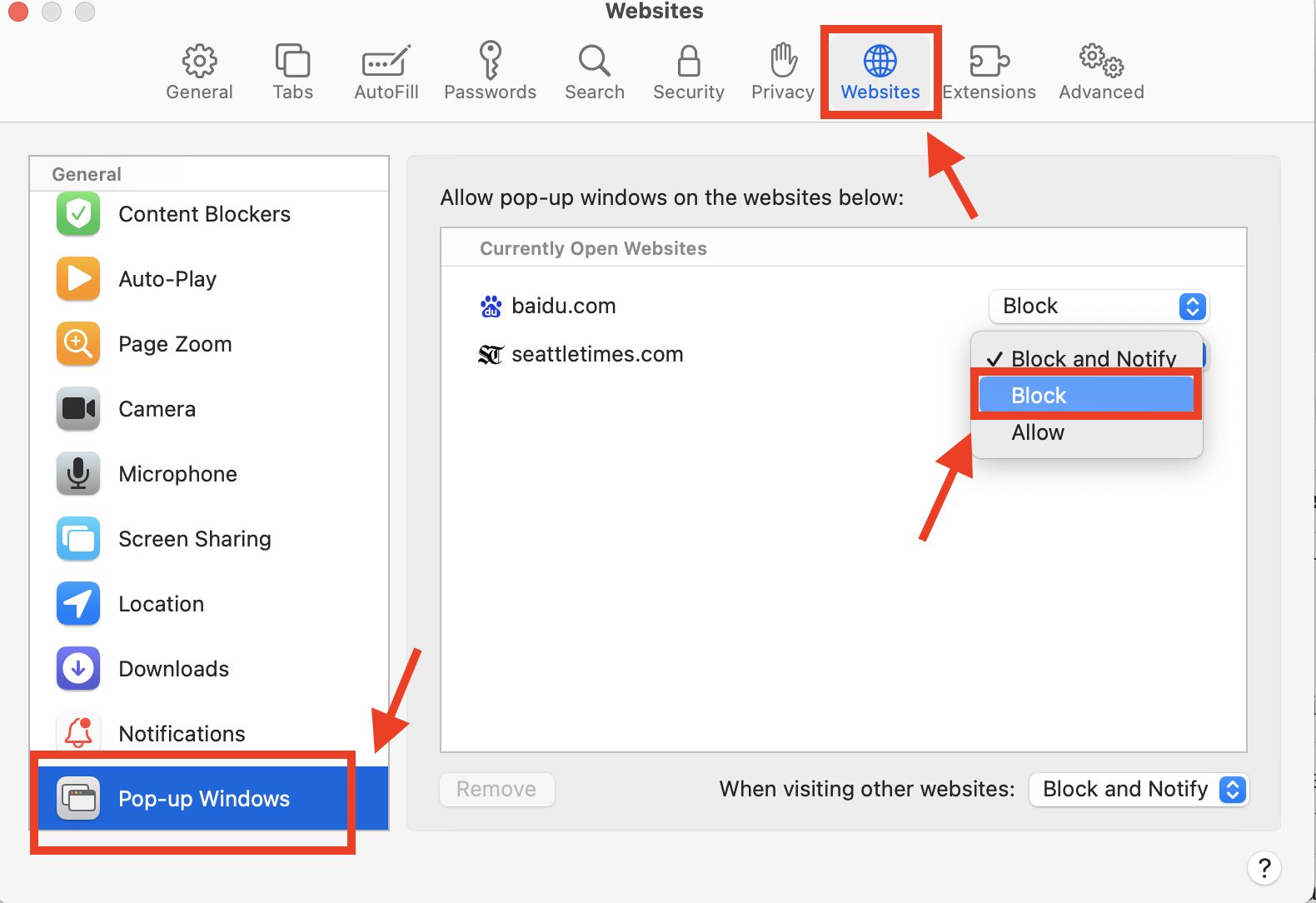Introduction
Safari, the popular web browser developed by Apple, is known for its sleek interface and seamless user experience. However, one common issue that users encounter is unwanted redirects while browsing the web. These redirects can be frustrating and disruptive, often leading to a poor user experience and potential security risks. Fortunately, there are effective methods to prevent Safari from redirecting, allowing you to enjoy a smoother and more secure browsing experience.
In this article, we will delve into the intricacies of Safari redirects and provide practical steps to stop them in their tracks. Whether you're using Safari on your Mac, iPhone, or iPad, these solutions are designed to help you regain control of your browsing sessions and mitigate the impact of unwanted redirects. By implementing the strategies outlined in this guide, you can safeguard your online activities and optimize your Safari browsing experience.
Let's explore the underlying causes of Safari redirects and equip ourselves with the knowledge and tools to combat this common issue. Whether you're a seasoned Safari user or new to the browser, understanding how to prevent redirects is essential for maintaining a secure and enjoyable browsing environment. So, let's dive into the world of Safari redirects and take proactive steps to reclaim control of your browsing experience.
Understanding Safari Redirects
Safari redirects refer to the phenomenon where the browser unexpectedly navigates to a different website than the one initially intended by the user. These redirects can occur due to various factors, including malicious scripts, compromised websites, or aggressive advertising tactics. When users encounter these redirects, they may find themselves directed to unfamiliar websites, potentially exposing them to phishing attempts, malware, or unwanted content.
One common type of redirect is the "meta refresh" technique, where a webpage automatically redirects to another URL after a specified time interval. This method is often exploited by malicious actors to force users onto deceptive or harmful websites without their consent. Additionally, some redirects are triggered by aggressive advertising networks that aim to drive traffic to specific websites, disrupting the user's browsing experience and potentially compromising their online security.
Furthermore, Safari redirects can also be a result of browser hijacking, where unauthorized changes are made to the browser's settings, leading to unwanted redirections. In some cases, users may inadvertently install browser extensions or add-ons that manipulate their browsing behavior, causing them to be redirected to undesirable websites.
It's important to note that Safari redirects not only disrupt the user experience but also pose significant security risks. Users may be exposed to fraudulent schemes, phishing attempts, or malicious software downloads when they are redirected to untrusted websites. As a result, it's crucial to address and mitigate these redirects to ensure a safer and more reliable browsing experience.
By understanding the underlying causes and potential risks associated with Safari redirects, users can take proactive measures to safeguard their browsing sessions and protect themselves from unwanted redirections. In the following section, we will explore actionable steps to prevent Safari from redirecting, empowering users to regain control of their browsing experience and enhance their online security.
Steps to Stop Safari from Redirecting
-
Update Safari and Operating System: Ensure that you are using the latest version of Safari and your operating system. Updates often include security patches and bug fixes that can address vulnerabilities exploited by malicious redirects.
-
Clear Safari Cache and Cookies: Navigate to Safari's preferences and select the "Privacy" tab. From there, click on "Manage Website Data" to remove stored cache and cookies. This can help eliminate any unwanted scripts or tracking mechanisms that may trigger redirects.
-
Disable JavaScript: Temporarily disabling JavaScript can help identify if redirects are caused by malicious scripts. In Safari preferences, go to the "Security" tab and uncheck the "Enable JavaScript" option. Remember to re-enable JavaScript after troubleshooting.
-
Manage Safari Extensions: Review and remove any suspicious or unnecessary extensions that may be causing unwanted redirects. Access the "Extensions" tab in Safari preferences to disable or uninstall extensions that could be contributing to the issue.
-
Reset Safari Settings: If you suspect that Safari's settings have been compromised, consider resetting the browser to its default state. This can be done by navigating to Safari preferences, selecting the "Privacy" tab, and clicking on "Remove All Website Data."
-
Use Content Blockers: Safari offers content blocking extensions that can prevent unwanted redirects and intrusive advertisements. Explore the available content blockers in the App Store and install reputable ones to enhance your browsing security.
-
Enable Pop-Up Blocking: In Safari preferences, navigate to the "Security" tab and ensure that the "Block pop-up windows" option is enabled. This can help prevent websites from triggering deceptive pop-ups that lead to unwanted redirects.
-
Check Website Permissions: Safari allows users to manage website permissions, including location access, camera usage, and notifications. Review and revoke permissions for suspicious websites that may be initiating redirects without your consent.
-
Scan for Malware: Perform a thorough scan of your device using reputable antivirus or anti-malware software. Malicious software or browser hijackers can contribute to unwanted redirects, and a comprehensive scan can help identify and remove such threats.
-
Report Suspicious Websites: If you encounter persistent redirects from specific websites, consider reporting them to relevant authorities or using Safari's built-in tools to report fraudulent or deceptive websites.
By implementing these proactive measures, users can effectively mitigate the impact of unwanted redirects and enhance their overall browsing security within Safari. These steps empower users to take control of their browsing experience and minimize the risks associated with malicious redirections.
Conclusion
In conclusion, addressing and preventing unwanted redirects in Safari is essential for maintaining a secure and uninterrupted browsing experience. By understanding the underlying causes of redirects and implementing proactive measures, users can effectively mitigate the risks associated with malicious redirections and enhance their overall browsing security.
The steps outlined in this guide provide a comprehensive approach to stopping Safari from redirecting. From updating Safari and clearing cache to managing extensions and utilizing content blockers, users have a range of tools at their disposal to combat unwanted redirects. Additionally, enabling pop-up blocking, reviewing website permissions, and scanning for malware are crucial steps in safeguarding against potential security threats posed by redirects.
It's important to emphasize the significance of staying vigilant while browsing the web. Users should exercise caution when encountering unfamiliar websites or unexpected redirects, as these could be indicators of potential security risks. By reporting suspicious websites and staying informed about the latest security developments, users can contribute to a safer online environment for themselves and others.
Furthermore, maintaining a proactive approach to browser security and regularly updating software and security settings can significantly reduce the likelihood of encountering unwanted redirects. By staying informed about emerging threats and leveraging the built-in security features of Safari, users can fortify their browsing experience and minimize the impact of malicious redirections.
Ultimately, by following the steps outlined in this guide and remaining proactive in addressing potential security risks, users can reclaim control of their browsing experience and enjoy a safer, more secure online environment while using Safari. With a combination of awareness, vigilance, and the implementation of best practices, users can navigate the web with confidence, knowing that they are equipped to prevent and address unwanted redirects effectively.

























